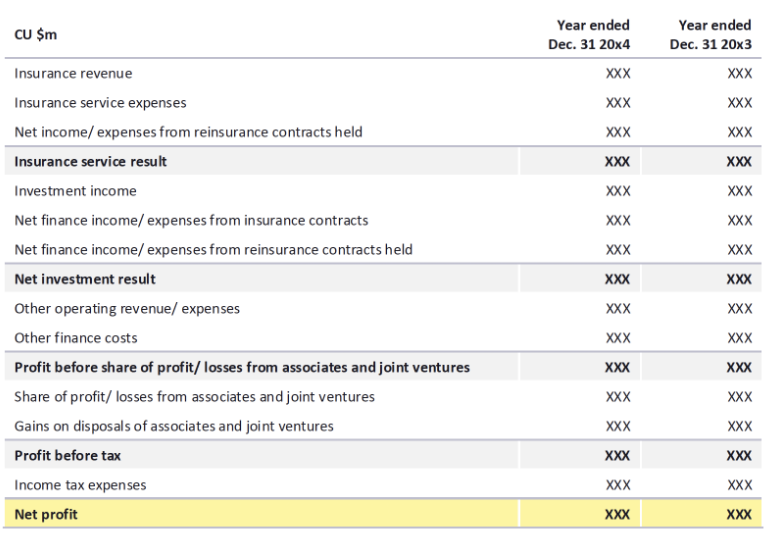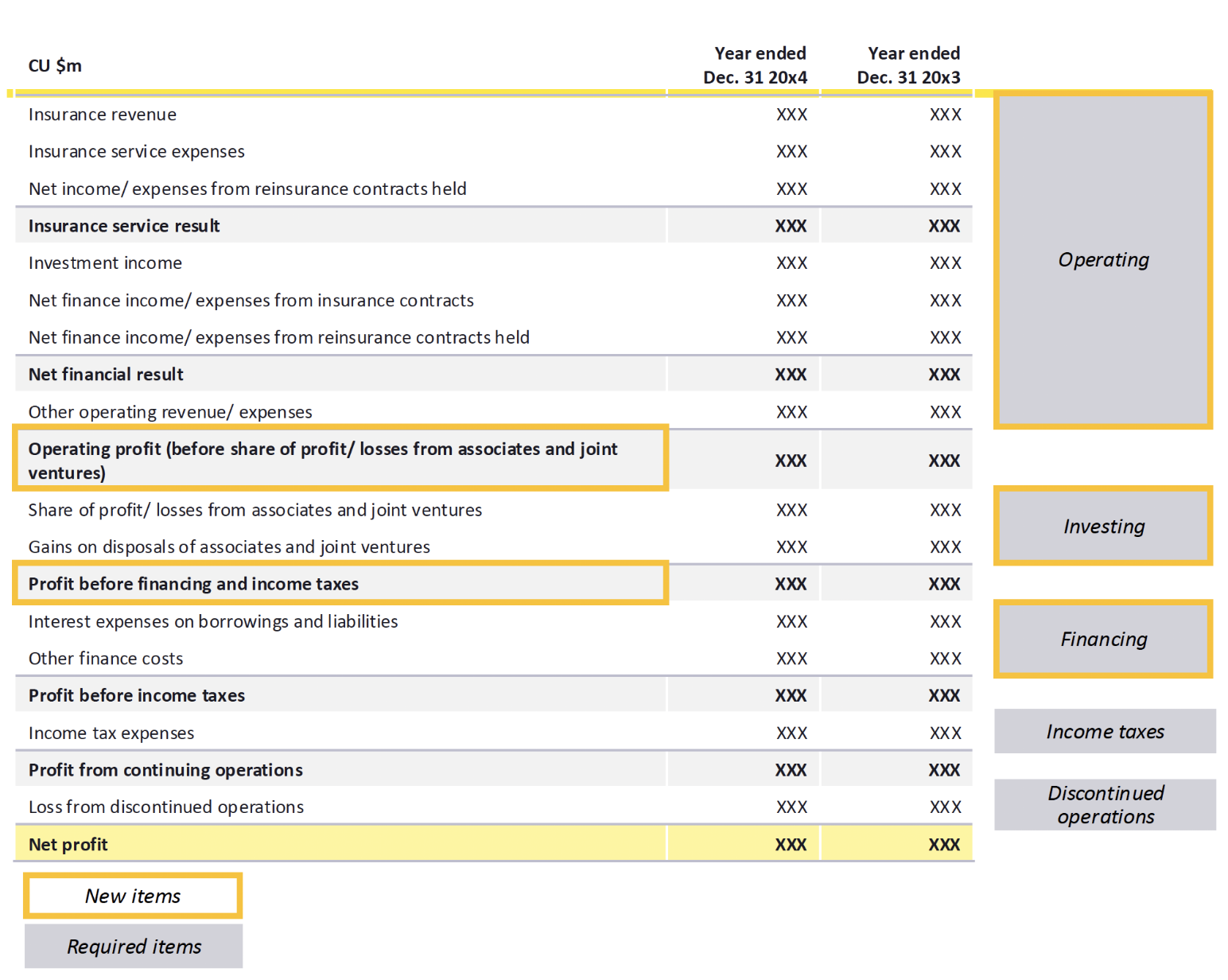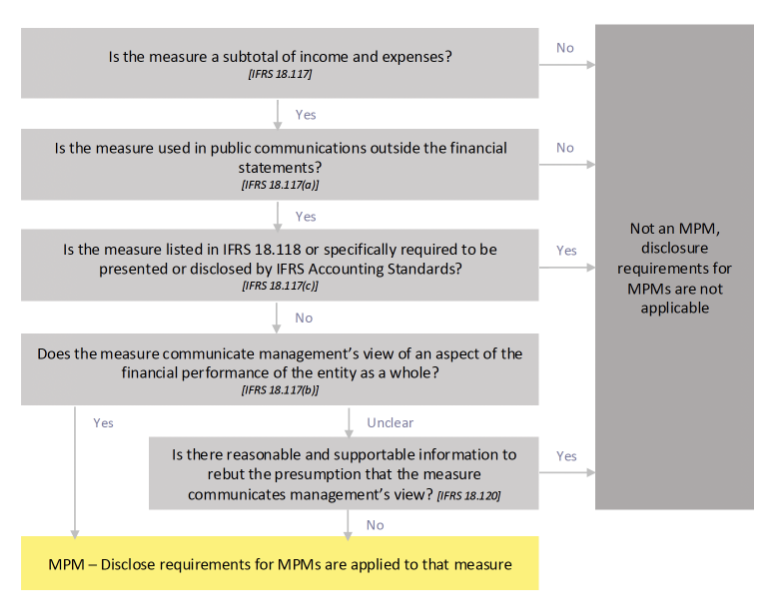IFRS 18: Introduction for Insurers
The Financial Reporter, September 2025
By Tze Ping Chng, Steve Cheung, Fung Chan and Yi Fang Ang

Following the significant transition for insurers with IFRS 17, the International Accounting Standards Board (IASB) issued IFRS 18 Presentation and Disclosure in Financial Statements in April 2024. IFRS 18 replaces IAS 1 Presentation of Financial Statements with an effective date of Jan. 1, 2027, with an allowance for early adoption. Companies will apply the new requirements in interim financial statements in the initial year of application and restate comparative information for the prior year. Unlike IFRS 17, IFRS 18 impacts all industries. The primary objective of IFRS 18 is to improve how companies present and disclose financial performance; it does not affect how companies measure financial performance.
This article discusses the key IFRS 18 requirements and their implications for insurers. For more details, please refer to Ernst & Young’s publication Applying IFRS - A closer look at IFRS 18.[1]
What is IFRS 18 and How Does it Impact Insurers?
Why do we need IFRS 18?
IFRS 18 focuses on how companies communicate financial performance to investors. Better information enables investors to make better decisions. Three key changes in IFRS 18 aim to address stakeholder feedback on existing financial statements:
(a) Reporting of (i) operating profit and (ii) profit before financing and income taxes to provide a consistent presentation structure and enhance comparability. This helps to address the feedback that the existing statements of profit or loss (income statement) vary in structure and content.
(b) Improved disclosure for non-GAAP measures, for instance, requiring reconciliation between management-defined performance measures (MPMs) and specified subtotals as per IFRS Accounting Standards. This helps to explain how these measures are calculated and why they are used.
(c) Appropriate grouping of information (aggregated or disaggregated) in financial statements.
How does IFRS 18 affect the set of financial statements?
IFRS 18 affects the complete set of financial statements, with expected changes as summarized in Table 1 below.
Table 1
Expected Changes from IFRS 18
Given the material impacts, this article focuses on the key changes in the (i) income statement and (ii) notes to the financial statements.
What are the key changes on the income statement for insurers?
IFRS 18 requires all companies to classify the income and expenses included in the income statement into one of five categories: (a) operating, (b) investing, (c) financing, (d) income taxes, and (e) discontinued operations (IFRS 18.47).
As an exception to the above, IFRS 18 requires entities with a “specified main business” activity to classify some of their income and expenses in the operating category instead of the investing or financing category (IFRS 18.50). The specified main business activity refers to (a) investing in assets or (b) providing financing to customers, or both. An insurance company is one of the examples of entities that invest in assets as a main business activity.
Following the exceptions, insurers shall classify the income and expenses from investments in the operating category, except the investments in associates, joint ventures, and unconsolidated subsidiaries that are accounted for by applying the equity method, and are classified in the investing category (IFRS 18.55-58).
For insurers, IFRS 18.64 states that “An entity shall exclude from the financing category and classify in the operating category: (a) income and expenses from issued investment contracts with participation features recognized applying IFRS 9 Financial Instruments; and (b) insurance finance income and expenses included in the statement of profit or loss applying IFRS 17 Insurance Contracts.”
IFRS 18 also requires an entity to present two newly defined subtotals in the income statement: (i) operating profit/loss, and (ii) profit/ loss before financing and income taxes (IFRS 18.69).
Tables 2 and 3 below illustrate the key changes in the income statement for insurers before and after implementing IFRS 18.
Table 2
Income Statement Before IFRS 18
Table 3
Income Statement After IFRS 18
What are the management-defined performance measures (MPMs) as defined under IFRS 18?
IFRS 18.117 states that “A management-defined performance measure is a subtotal of income and expenses that:
(a) an entity uses in public communications outside financial statements;
(b) an entity uses to communicate to users of financial statements management’s view of an aspect of the financial performance of the entity as a whole; and
(c) is not listed in paragraph 118, or specifically required to be presented or disclosed by IFRS Accounting Standards.”
It is common for insurers to present non-GAAP measures in their existing financial statements or notes. For example, some insurers define additional measures such as “adjusted operating profit,” determined using specific methodology and assumptions on top of the IFRS Accounting Standards. These measures (if identified as MPMs) are required to be disclosed under IFRS 18 and subject to the audit.
How does an entity identify an MPM?
Figure 1 below, based on IFRS 18.IE Figure 6, provides an overview of how an entity identifies an MPM
Figure 1
How Entities Identify an MPM
What is the disclosure requirement of MPMs?
An entity shall disclose the information of MPMs in a single note to the financial statements. IFRS 18.123 lists out the disclosure requirements as:
(a) “a description of the aspect of financial performance that, in management’s view, is communicated by the MPM. This description shall include explanations of why, in management’s view, the MPM provides useful information about the entity’s financial performance;
(b) how the MPM is calculated;
(c) a reconciliation between the MPM and the most directly comparable subtotal listed in IFRS 18.118 or total or subtotal specifically required to be presented or disclosed by IFRS Accounting Standards;
(d) the income tax effect and the effect on non-controlling interests for each item disclosed in the reconciliation required by (c) above; and
(e) a description of how the entity applies paragraph IFRS 18.B141 to determine the income tax effect required by (d) above.”
What are the principles of aggregation and disaggregation for insurers?
IFRS 18 requires entities to (a) classify and aggregate assets, liabilities, equity, income, expenses or cash flows into items based on shared characteristics, and (b) disaggregate items that have different characteristics in the primary financial statements and notes. Besides, an entity shall ensure that aggregation and disaggregation in the financial statements do not obscure material information (IFRS 18.41). As noted in IFRS 17.96, examples of aggregation bases that may be appropriate for information disclosed about insurance contracts are (i) types of contracts (e.g., major product lines), (ii) geographical area, and (iii) reportable segment as defined in IFRS 8.
What are the requirements related to the disclosure of capital?
Same as the requirements noted in IAS 1.136 — an entity, including insurer, shall disclose in the notes information that enables users of financial statements to evaluate the entity’s objectives, policies and processes for managing capital.
In particular, additional considerations are required for an entity that operates both banking and insurance activities as the entity may manage capital in a number of ways and be subject to different capital requirements. IFRS 18.129 states that, “When an aggregate disclosure of capital requirements and how capital is managed would not provide useful information or would distort a financial statement user’s understanding of an entity’s capital resources, the entity shall disclose separate information for each capital requirement to which the entity is subject.”
Conclusion
IFRS 18 is not expected to affect how companies measure financial performance. The objective of IFRS 18 is to improve the understandability and comparability of financial statements.
The impact of the new requirements might vary across different insurers. Insurers may want to plan ahead as IFRS 18 may impact the internal processes for the financial statements preparation, the relevant system, as well as internal and external communication. Insurers may also want to align with the respective auditors on the key judgements applied, and the disclosures related to the MPMs.
This article is provided for informational and educational purposes only. Neither the Society of Actuaries nor the respective authors’ employers make any endorsement, representation or guarantee with regard to any content, and disclaim any liability in connection with the use or misuse of any information provided herein. This article should not be construed as professional or financial advice. Statements of fact and opinions expressed herein are those of the individual authors and are not necessarily those of the Society of Actuaries or the respective authors’ employers.
Tze Ping Chng, FSA, MAAA, is a partner at Ernst & Young Advisory Services Limited in Hong Kong (EY HK). He can be contacted at tze-ping.chng@hk.ey.com. The views reflected in this article are the views of the authors and do not necessarily reflect the views of the global EY organization or its member firms.
Steve Cheung, FSA, CPA, is a partner at EY HK. He can be contacted at steve.cheung@hk.ey.com. The views reflected in this article are the views of the authors and do not necessarily reflect the views of the global EY organization or its member firms.
Fung Chan, FSA, is a senior consulting actuary at EY HK. He can be contacted at fung.chan@hk.ey.com. The views reflected in this article are the views of the authors and do not necessarily reflect the views of the global EY organization or its member firms.
Yi Fang Ang, FSA, is a senior associate at EY HK. She can be contacted at yi.fang.ang@hk.ey.com. The views reflected in this article are the views of the authors and do not necessarily reflect the views of the global EY organization or its member firms.
Endnote
[1] https://www.ey.com/en_gl/technical/ifrs-technical-resources/applying-ifrs-a-closer-look-at-ifrs-18-updated-july-2025




